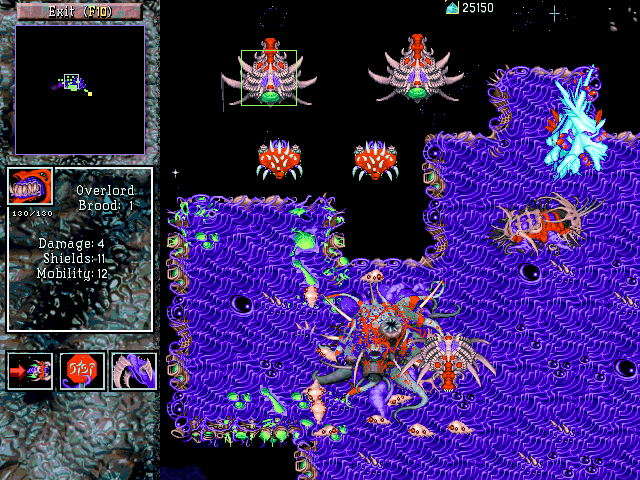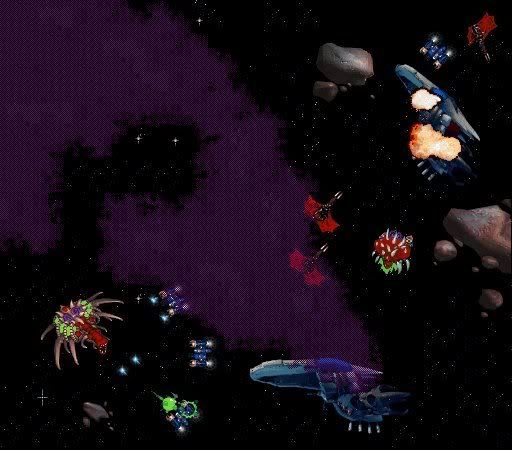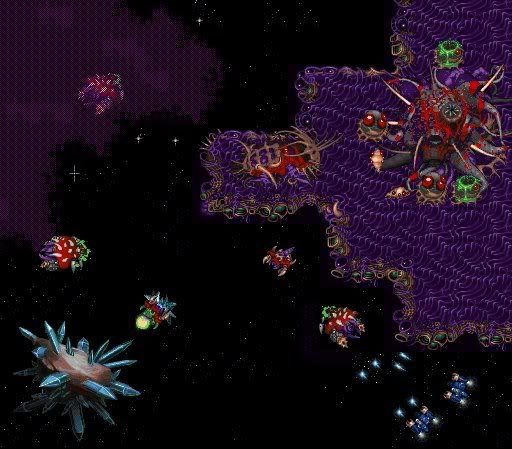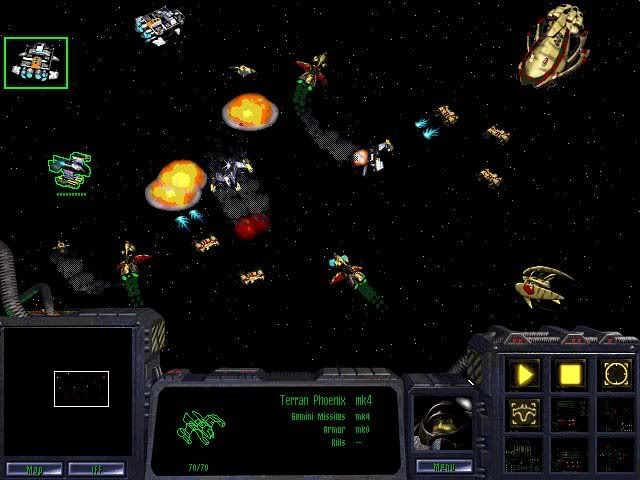Dear Malstrom,
Today, I witnessed a phenomenon that I’ve only read about in your
blog. While I’ve always seen some trepidation towards the star-finder
Mario games, I’ve never seen a person outright reject the games
before.
To give some background on this situation, my brother recently moved
into my place after a fairly short divorce process. To help pass the
time, he’s been playing the Wii, and trying to find something he
likes. He is a true lapsed gamer – he stopped playing shortly after
Super Mario 64 hit market, and really never showed interest until
recently. He really enjoys Wii Sports Resort, and polished off Mario
5 in a matter of days. Lately he’s been enjoying Muramasa: The Demon
Blade.
Anyway, that’s not important. Today, my brother was looking for
something new to play. He pulled Galaxy off of my shelf and asked how
it was. I gave my two cents on the title (“I didn’t enjoy it as much
as New Super Mario”), and off he went. I decided to watch his
reactions. He absolutely loved the sight of the Mushroom Kingdom, but
once the round surfaces came in, he seemed to lose interest quickly.
After about ten minutes, he just put the remote down, looked at me,
and said “That’s not a Mario game. I don’t know what the hell it is,
but it’s not a Mario game.” He gave me a strange look when I said the
sequel was due out in May. “Why would they make a second one,” he
asked. “Why couldn’t we get more games like the other Mario? That one
was awesome!” I simply didn’t have an answer for him.
Really, I’m afraid to see how he’ll react when he sees that the next
“Metroid” title isn’t really a Metroid game.
The biggest business mistake in the entire history of Nintendo is not the Virtual Boy, not pissing off Sony with the PlayStation, but the decision to stop making Mario games. They should have known something was off when Mario 64 didn’t sell as strongly as Super Mario World especially in territories like Japan. Now, the reason why Nintendo stopped making Super Mario Brothers games is no more complicated than Miyamoto saying “We’ve made these games. We don’t want to make them anymore.” Nintendo developers are obsessed over 3d Mario. They kept making 3d Mario instead of Super Mario Brothers because they confused themselves liking it with the market liking it. There is no reason to make Super Mario Galaxy 2 as Galaxy 1 didn’t make much of an impact. I’d even argue Mario 64 was grossly overrated in terms of its impact on video games. “Well, Malstrom,” a sniveling voice will say, “what other game could have had more impact in 1996?” Oh, how about Quake? How about Command and Conquer? How about Warcraft 2? There was no reason for real gamers to stick around on consoles like the N64 when there were more exciting things occurring in other areas. The births of new genres like RTS and FPS along with network and Internet gameplay beat the pants off all the consoles. Even the Tomogotchi phenomenon at the time with its dot matrix graphics were more interesting than Mario 64. This doesn’t imply that Mario 64 didn’t have its charms with Peach’s castle, with jumping through paintings, and moving around in 3d for the first time. But consumers saw the game as a spin-off, not as a replacement for Super Mario Brothers.
If Nintendo made Super Mario Brothers 5 for the N64, I would have bought a N64. If Nintendo made Super Mario Brothers 5 for the Gamecube, I would have bought a Gamecube. But Nintendo did make Super Mario Brothers 5 for the Wii and look at the market reaction to that was. Reggie Fils-Aime was on TV prior to holidays of 2009 and was confident they were not going to run out of Wii as they had a huge pipeline. So the sales success surpassed Nintendo’s projections. Not like they are complaining, of course.
I know it is NOA’s job to sell whatever comes out of NCL, but I hope no one at NOA truly believes that people who bought Mario 5 are going to transition to Galaxy 2. Tell me they are not that naive!
The entire premise of why the DS and Wii exist in the first place is to combat disinterest to video games. So let us examine the ‘disinterest’ part. I’ve always tried to come up with a few questions in my head if I ever, one day, walk down the street and run into someone from Nintendo. Like prior to Mario 5, I would have asked Miyamoto this question: “Why do you hate us? Why do you hate people who like Super Mario Brothers?” After all, not making a Mario game for almost twenty years is a gigantic ’screw you!’ to these people. The only thing that would top it would be to put the Tanooki Suit in 3d Mario and deliberately leave it out of 2d Mario.
My question to someone high up at Nintendo would be:
“Why do you people keep associating disinterest with lack of accessibility? What you are seeing is not disinterest in video games but a BOYCOTT from consumers. It is not that gamers are becoming disinterested in gaming, it is that they are actively boycotting them and protesting the direction gaming is going by refusing to buy them.”
This will likely receive an interesting response. They will probably respond with, “How do you know it is a boycott?”
“Why do you think stigma against gaming was rising? Let us take a microcosm as an example. Look at World of Warcraft which debuted in 2004 to great success. Over time, a great stigma is growing about the WoW users. This stigma is coming not from people who do not understand the game but from former players. It is the former players who are generating the stigma, not the never-before-played gamers. The never-before-played-gamers probably still don’t know what WoW is. It is the former users who are mocking those who still play the game and joke what a colossal waste of time it is.”
They might say, “But how does disinterest equal a boycott?”
“3d Mario is the perfect example of it. There are millions of people who are not just disinterested in 3d Mario, they are actively boycotting it by refusing to buy it. And when Mario 5 comes out, all these millions of people mysteriously reappear into the market. When Galaxy 2 fails to sell to these people, the only logical conclusion is that these people are actively against 3d Mario. They are interested in video games, interested in Mario, but they do not want 3d Mario.”
Then I’d probably get the response from Nintendo: “Yeah? Well, all you are going to get is 3d Mario! More and more 3d Mario! 3d Mario for handhelds! 3d Mario for consoles! You won’t see another 2d Mario for twenty years! You see, Malstrom, we here at Nintendo do only what pleases Nintendo’s software developers. They want to make 3d Mario. Who cares what you want to buy?”
One thing is for sure is that game developers, be them in Nintendo or in the West, are no longer connected to the public. The reason why you would make a game that entertained you was because you were a member of the public. If it entertained you, then other people would be entertained. This rule no longer works for video game developers. And I suspect I know the reason why.
When gaming was younger, game developers were more normal. Gaming was considered ‘non-existent’ as an industry. ‘Game developer’ was not even considered a profession let alone a respectable one. These game developers, then, were more down to earth and connected to the real world.
Today, they are being swallowed by the machine in perfect Luhan fashion. They have spent so much of their adult lives with computers that they literally are losing touch with the public. If you think I am resorting to hyperbole with this, consider how ‘excited’ game developers became over the HD consoles that had better processor power or HD visuals. People whose lives are dominated by computers would, of course, think better computer technology was a big deal. And these people could not see the Wii rocket coming and even after it went off, they are still in denial.
So what happens when a video game developer makes a game that excites himself? Who else is getting excited? Only by those who have been swallowed by the machine, those who the computer dominates their entire lives. This would include message forum dwellers as well as anime freaks. But the vast public outside remains unconnected.
Some are realizing just how out of touch they are with the general public. They want video games to emulate board games in that they never strive to become mainstream. They want video games to be like board games as a niche hobby. They do not want to connect to the general public because that would force them to change their own thinking inside their head.
Video game developers making games that entertain them only works if you are not eccentric. The longer you make video games, the more eccentric you become so the games become more and more ‘off’ when connecting to the general public. So we get to a common scenario where a complete outsider makes a huge breakout hit while an industry veteran won’t know what the hell is going on.
In order to battle disinterest in video games, video game developers are going to have to make war against their own eccentricity. Most of the games that the ’swallowed by the machine’ crowd love are ones I just shake my head and wonder, “What reality are these people living in?”
There are people inside Nintendo who do not understand why people do not see 3d Mario as a Mario game. They will just say it is a matter of ‘accessibility’. But no, it is because people really do not want to play 3d Mario. No matter how many times Nintendo makes them, the market doesn’t respond in the same way.
In order for 3d Mario to become seen as a proper Mario game, many radical changes are going to have to be made. First off, the ’star finder’ element needs to be completely scrapped. Mario is an action game, not a scavenger hunt game. The goal should be getting to the flagpole, not getting some star. The goal is to keep moving in one direction and having many paths and choices to get past the obstacles. 3d Mario does not allow this.
The hub world needs to be scrapped for a proper map screen (I see this has been done in Galaxy 2). There can be no repeat of worlds. No one wants to play the same exact world again but with slightly minor differences. They want a new world each time like in a real Mario game.
Power-ups need to have offensive capabilities. The power-ups in 3d Mario tend to suck because there is no offensive abilities in them. The Bee Mario, for example, had no offensive capability. From fire flower to raccoon Mario to Hammer Brothers Suit to Yoshi, Mario’s power-ups were offensive (except for frog suit but it was supposed to suck outside of water).
If you went to Mars at the end of the 16-bit generation and arrived back in a similar spaceship and looked at Nintendo’s output, you would come to the conclusion that Nintendo was a paralyzed company due to having no creativity. The problem is not the constant Mario and Zeldga games. The problem is that the latter 16-bit and N64 Era has placed in stone the way these series are run. If there is a 3d Mario, it is always molded in the same fashion as Mario 64. It does not occur to Nintendo to try something different. Zelda games are all modeled after Link to the Past or Ocarina of Time. With Metroid, there is some obscene obsession of Super Metroid which was a low point for the series coming after Metroid I and II (and reflected in Super Metroid’s sales which is probably why it was a decade until the next Metroid appeared. If Super Metroid sold better, you would have seen the game appear on the N64 no doubt).
Remember Starfox DS? All that game was were the stale ideas from the canned Starfox 2 project. Who cares about ideas for today’s games hatched during the 1990s? Nintendo developers seem stuck in a time warp of the late SNES and early N64 Era.
As for Metroid: Other M, you are right to be afraid of what his reaction will be. There is going to be intense hostility for Other M. It is beginning to look like the game will destroy the Metroid franchise. Samus Aran could become such a joke that in order for the Metroid franchise to survive, the games might have to exclude Samus Aran entirely.
I like these emails showing of personal antedotes of people, men or women, who are not happy with 3d Mario or with the N64 spirit of gameplay. The ones who are for Super Mario Brothers and against 3d Mario are not grumpy older gamers like myself but women. Games that sell well on the Wii do so because they can sell to women too. Look at the Wii’s top selling games, and you will find that women love all of them.
None of this should be surprising. Nolan Bushnell pointed out, prior to the Wii’s launch, that violence lost the female gamer. Female gamers were all over the place during the Atari and NES Eras. But during the 16-bit generation as gaming moved more into the Mortal Kombat direction, more and more games were not being made for girls.
Come to think of it, women play World of Warcraft (where I don’t recall them playing previous MMORPGs) which has to be a key reason for its immense success.













































































